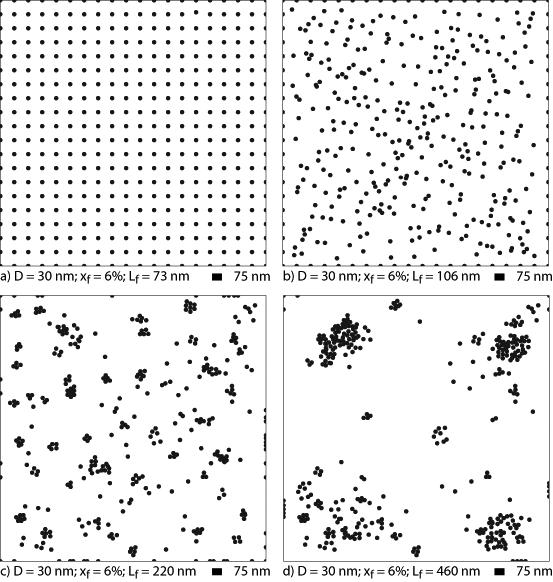
Dispersion Characterization
We have developed a program using MatLab to quantitatively characterize nanocomposite dispersion. The Polymer article, A Quantitative Method for Measuring Nanocomposite Dispersion, describes the rationale behind the code's development. The output is a single parameter descriptor of the characteristic length of unreinforced polymer domains. In an unreinforced polymer, this free-space length is infinite. The goal of the reinforcement is to reduce this length without introducing significant agglomeration.Calibration images from the paper are provided to the right; you should be able to duplicate the free space length for each image (each is 2µm wide). Note that the free-space lengths are slightly different than those cited in the paper; this is due to pixelation of the curved edges. The automated mode helps to locate the approximate free-space length. We recommend manual iteration with large sampling sizes (~5000) for final calculations. Manual mode is also useful for obtaining statistics.
Click here to access Dispersion Characterization Code
Click here to access a tutorial
Right click and save bmp calibration images:
(a) (b) (c) (d)



